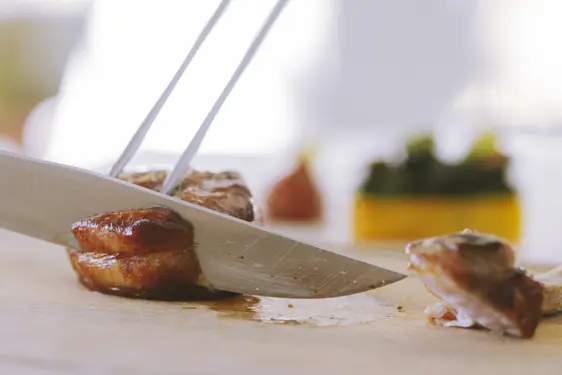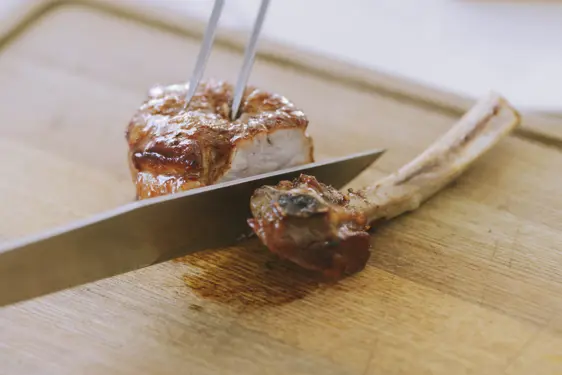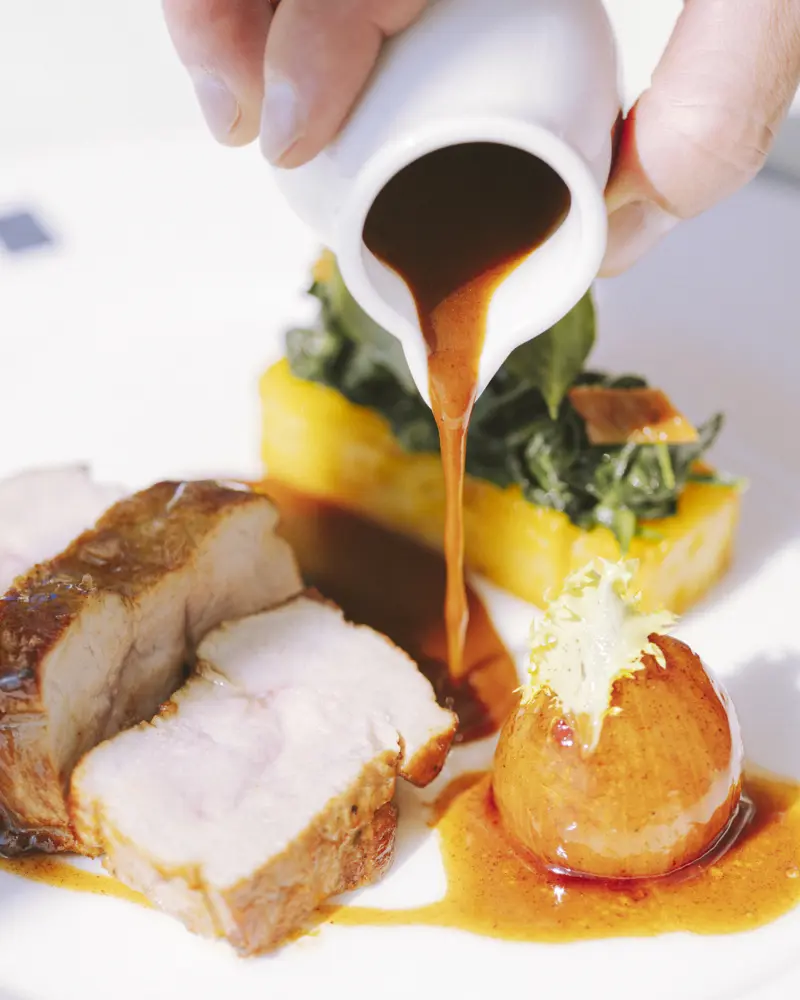RECIPE: RIBEYE VEAL WITH SALT-BAKED ONIONS AND PURÉED POTATOES
20.04.2023 RECIPES
In the case of meat, there is a world of difference between cheap, plastic-packaged factory-farmed produce and cuts sourced from a reliable butcher who cares about provenance and knows what the animals have been fed.
The food retail scene is changing in Italy as elsewhere. Time-crunched urbanites rely increasingly on supermarkets, but small artisanal butchers, fishmongers and delis are still resisting the tide – in some places, even turning it back. Wherever in the world you live, this recipe’s first stage is one that can’t be rushed. If you don’t have one already, find a good butcher, preferably one that works with cattle farms that supply responsibly-produced ‘rose veal’ – not the pale white variety.
Once found, good cuts of meat should be prepared, Gennaro believes, with a minimum of fuss, with a simple accompaniment designed to soak up the juices and exalt the flavour. In this case, onions and potatoes do the job brilliantly.

View
INGREDIENTS
serves four
- 4 bone-in ribeye cuts of around 200g (7oz)
- Six medium potatoes, not too waxy, not too floury
- Four medium brown onions
- 2kg (4lb 7oz) coarse sea salt
- 2 bunches chives, chopped finely
- 200g baby spinach
- Olive oil, salt and pepper

View
The best way to get exactly the right bone-in ribeye veal cut is to show the photo above to your butcher. In Italian, this cut is often called ‘lombata’, though that also covers sirloin, and there are several regional variations. Each serving should have just one projecting rib.
Begin by chopping the potatoes into halves or quarters and boiling or steaming them in their skins. Once they are soft but not disintegrating, peel and mash (preferably by hand using a masher), add salt, pepper and the chopped chives, and gradually pour in olive oil, stirring all the while to remove lumps, until you achieve a thick, creamy consistency.
You are perfectly entitled to serve the mashed potatoes (or ‘puréed potatoes’ to give them their fancy French name) just as they are. When he prepares this dish at La Sponda, Gennaro goes that extra yard by turning them into golden slabs reminiscent of those polenta squares that are served with rich sauces in northern Italy. To follow suit, spread the mashed potato evenly into in a baking tray or sheet lined with greaseproof paper, pop another sheet of greaseproof paper on top, and press down (for example with a silicon chopping board) until you have an even potato sheet around an inch (2.5cm) high. Let it cool, then cut into squares, rectangles or other shapes as the mood takes you – Gennaro opts for rectangles of around 10cm (4 inches) by 3cm (just over an inch). When almost ready to serve, heat some oil in a frying pan and when it is hot, fry the puréed potato slabs until golden on both sides.
Set the oven to 160°C (320°F). Take the four onions, remove their tough skins, and seat them in a small baking tray into which you have sprinkled a thin layer of coarse sea salt. Now pour the rest of the sea salt in to entirely cover the onions. Bake for an hour. Remove carefully from their salt case. Peel off the outer layers until you have only the heart of the onion left (refer to the photo below for an idea of how much to take off). Carefully remove the very heart of this heart to create an empty central space. Chop the outer layers and ‘heart of heart’ together finely and use these to stuff the onion to create the ‘volcano’ effect you see in the picture.
Finally, we come to the simplest part of all. Fry the four ribeye cuts in a shallow layer of olive oil (make sure the oil is nice and hot before you put them in) for around three or four minutes on each side. Reserve any juice run by the meat. Then place in a baking tray, turn the oven up to 170°C (338°F), roast for six minutes, turn them over and roast for another six minutes. Decant the meat dripping into a small pan with the juices from the frying pan, add a little water, and reduce until you have a tasty veal jus.

To create the spinach garnish, simply toss the baby leaves in a little olive oil (with a little crushed garlic if you like it) until they wilt a little, but not too much. With the pan on a medium heat, a minute should be plenty.
Carve the meat into three or four succulent steaks and serve as pictured, with the golden potato slab topped with the spinach, and the meat jus poured over the onion and around the ribeye steaks.
Photos © Roberto Salomone
Le Sirenuse Newsletter
Stay up to date
Sign up to our newsletter for regular updates on Amalfi Coast stories, events, recipes and glorious sunsets



